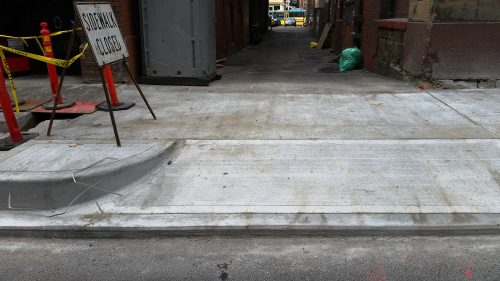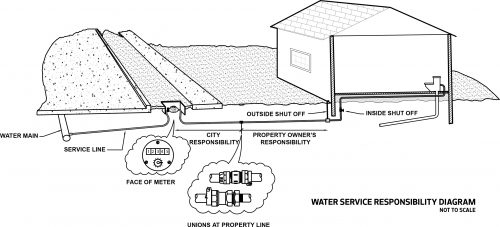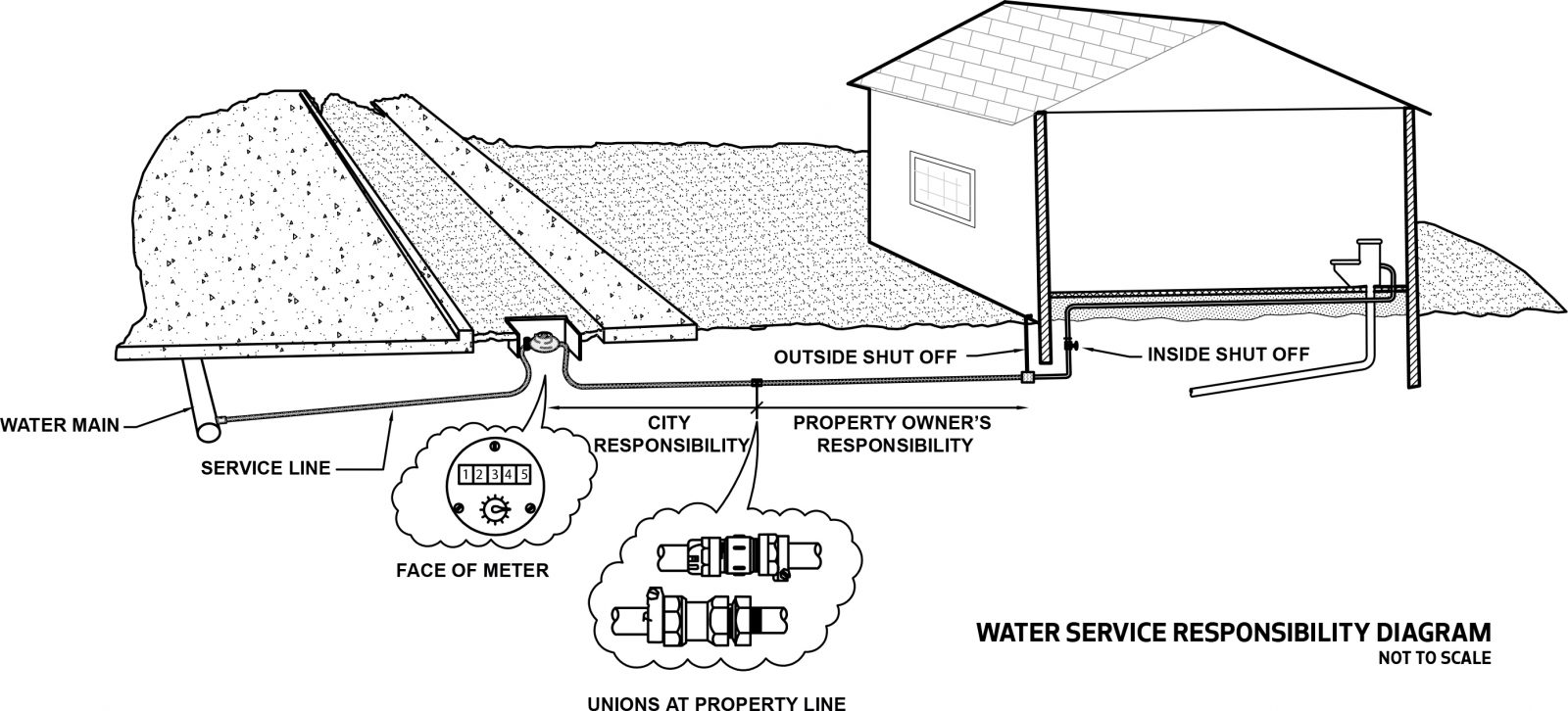Construction Permits
- Group 1 Permit
- Group 2 Permit
- Group 3 Permit
On this page:

Construction Permits include the construction or repair of improvements to the right of way such as street paving, curbs, or sidewalks. Construction permits are further broken down into three groups depending on the extent and complexity of work to be completed. Further explanation is available on Client Assistance Memo 2209.
Group 1 Permit
Street Use construction permits that can be obtained any time prior to construction or installation of the improvement. Some examples include street tree planting, pruning, or removal and replacement, clearing vegetation on the right-of-way and/or construction of a driveway apron on a street with an existing curb.
Group 2 Permit
Construction permits which should be obtained concurrently with a building permit, if applicable. These permits generally include items that may impact your building design. Some project examples include: constructing or rebuilding walls, rockeries, new asphalt driveway. This category of permits typically requires a plan review to determine whether the conditions on the site are suitable for the type of improvement desired. SDOT must review and approve the permit prior to commencing work. This group of permits also includes service connections including power, communication, gas, steam, water, sewer, drainage. If the use is privately owned and maintained, a Public Space permit may also be required.
If the project falls into the type of improvements in Group 2 and are not reviewed and/or permitted by SDOT at the time the applicant is obtaining the construction permit, the applicant may be required to make significant changes to their private property development plans to construct their project to the appropriate grade, consistent with SDOT standards and SMC Title 15.
While all types of construction considered Group 2 permits may have some impact on building design, side sewer repairs and curb cut installations, are integral to building designs. Because of the close connection of these permits with the SDCI review process, these permits are issued by SDCI on behalf of SDOT.
Curb Cut Installations:
The permitting agency for curb cut installations is further defined depending on the existence of a curb:
No existing curb: When there is no existing curb, the City of Seattle requires a Street Use Driveway Permit for the installation of a driveway that will join with a public street. SDOT issues and inspects the work for this permit. A Group 2 permit is required when there is no existing curb.
Existing curb: The City of Seattle requires a Curb Cut Permit to remove a portion of an existing curb for the purpose of providing access to private property. This permit is issued by SDCI and the work is inspected by SDOT.
Side Sewer Permitting:
Side sewers, which include service drains and any other piping that is connected to public storm drains or sewers, are installed, owned, and maintained by the owner of the property being served. This ownership extends from the building structure to the tee or wye connection at the main, and therefore the property owner is responsible for excavation, installation, and restoration within the street right-of-way.
Side sewer construction shall be in accordance with the City of Seattle Standard Plans and Specifications, latest edition. There may be additional requirements for service taps, backfilling, shoring, and restoration within the street right-of-way or public easement.
Side Sewer permitting is administered by the Department of Construction and Inspections (SDCI), which provides guidance and ensures that requirements are met by performing application review and site inspection. Construction work in the street right-of-way is inspected by SDOT. For more information on side sewer permitting please read SDCI TIP 503.
Water Services, Hydrants, and Other Water System Appurtenances:
The installation of water services, hydrants, and other water system appurtenances in the street right-of-way that are to serve a property or development requires a Street Use Permit issued by SDOT and either a standard charge or a time and materials charge payable to SPU. The installation of these facilities is done by SPU and the Street Use Permit is obtained by SPU.
To obtain a water service, there are several key steps:
- Determine your use, and the flow range and diameter of the water service you need. Contact SPU’s Development Services Office consultants for assistance 206 684-3333.
- Obtain a Water Availability Certificate (WAC) to determine whether water service is available to your property. A legal description and the name and address of the owner/contact person are required per the WAC. If water is available, you can apply for a water service with SPU’s Development Services Office Branch. For details, please review the SPU CAM 1202. At the time of this application, payment for the water service must be made. In some cases, a plan by a registered professional engineer that is acceptable to SPU may be required. Otherwise SPU will use its standard details.
- Once application and payment has been made, the Street Use Permit application and installation is completed by SPU.
- If hydrants and other water system appurtenances in the street right-of-way are needed for your project and they are an individual installation (e.g., water fountain, hydrant) that is not part of a larger water system improvement, then a request and payment will need to be made to SPU.
Contact SPU for more information and a standard charge or time and materials charge payable to SPU will be required prior to the commencement of any work. In some cases, a design by a registered professional engineer will be needed. Once the fees and design are complete, the Street Use Permit and installation are performed by SPU as is the case with water service installations. Refer to the SPU website for details on how to initiate water services.
The City maintains public utilities that have been installed to serve the general public. The property owner is responsible for maintenance of service lines to their properties. Property owners are also responsible for the portion of their water service that extends from the union generally located at their property line to the shutoff valve of their residence or business. The City is responsible for the portion of the water service that extends from the union to the water main, including the meter and service line. Refer to Figure CI: Water Service Responsibility Diagram which illustrates City and property owner responsibilities regarding water service. Water service for Fire Mains need approval from Seattle Fire Department.
Group 3 Permit
Major construction permits are required for installation of new or realigned city owned infrastructure (Street Improvement Permits), utility mainlines (Utility Major Permits), or major excavation in the right of way (Shoring Permits).
Street Improvement Permits (SIP):
Street Improvement permits are required for new or realigned city owned infrastructure and significant repair projects as well as frontage improvements related to adjacent property development. When street improvement permits are required in conjunction with private development, the 60% SIP must be approved by Street Use prior to the construction permit intake. Some projects may also require a Public Space permit identified during the SIP review. Utility main extensions require a SIP and a permit application cannot be submitted to SDCI until a 60 percent SIP submitted by the applicant, is approved by SDOT.
Utility Major Permits (UMP):
Utility major permits are required for new mainline infrastructure, if the installation requires a significant amount of restoration, or if new transportation infrastructure is triggered.
Shoring Permits:
The City of Seattle Department of Transportation requires a Shoring and Excavation Permit if a project meets the following criteria:
- Excavation or construction adjacent to the street right-of-way deeper than three feet; and
- Any excavation where the plane extending from the bottom of an excavation at 100% (45 degree) slope crosses the property/street right-of-way line.
This permit is required whether or not the street right-of-way is improved or even open to traffic. The purpose is to protect the stability of the street right-of-way and facilities within and/or near the street right-of-way.
In cases where there is an associated Department of Construction and Inspection (SDCI) Construction Permit, SDOT does not issue a separate Shoring & Excavation Permit. However, when excavation on private property meets the criteria stated above, the plans for excavation or shoring must be reviewed and approved by the SDOT’s Street Use Section before SDCI will issue a Construction Permit.


